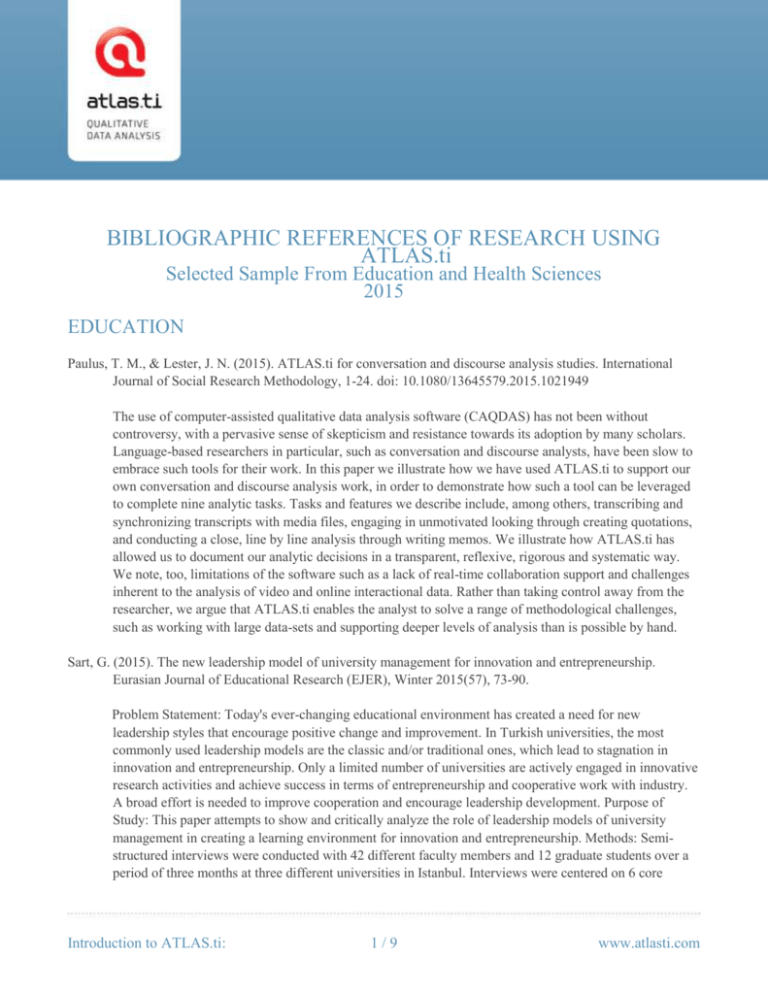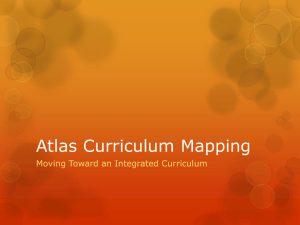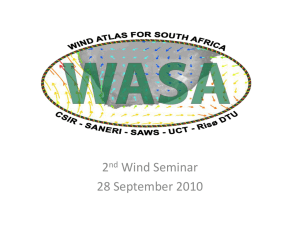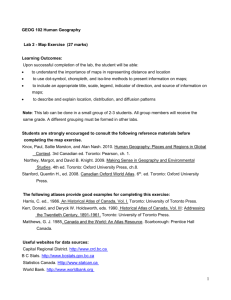
BIBLIOGRAPHIC REFERENCES OF RESEARCH USING
ATLAS.ti
Selected Sample From Education and Health Sciences
2015
EDUCATION
Paulus, T. M., & Lester, J. N. (2015). ATLAS.ti for conversation and discourse analysis studies. International
Journal of Social Research Methodology, 1-24. doi: 10.1080/13645579.2015.1021949
The use of computer-assisted qualitative data analysis software (CAQDAS) has not been without
controversy, with a pervasive sense of skepticism and resistance towards its adoption by many scholars.
Language-based researchers in particular, such as conversation and discourse analysts, have been slow to
embrace such tools for their work. In this paper we illustrate how we have used ATLAS.ti to support our
own conversation and discourse analysis work, in order to demonstrate how such a tool can be leveraged
to complete nine analytic tasks. Tasks and features we describe include, among others, transcribing and
synchronizing transcripts with media files, engaging in unmotivated looking through creating quotations,
and conducting a close, line by line analysis through writing memos. We illustrate how ATLAS.ti has
allowed us to document our analytic decisions in a transparent, reflexive, rigorous and systematic way.
We note, too, limitations of the software such as a lack of real-time collaboration support and challenges
inherent to the analysis of video and online interactional data. Rather than taking control away from the
researcher, we argue that ATLAS.ti enables the analyst to solve a range of methodological challenges,
such as working with large data-sets and supporting deeper levels of analysis than is possible by hand.
Sart, G. (2015). The new leadership model of university management for innovation and entrepreneurship.
Eurasian Journal of Educational Research (EJER), Winter 2015(57), 73-90.
Problem Statement: Today's ever-changing educational environment has created a need for new
leadership styles that encourage positive change and improvement. In Turkish universities, the most
commonly used leadership models are the classic and/or traditional ones, which lead to stagnation in
innovation and entrepreneurship. Only a limited number of universities are actively engaged in innovative
research activities and achieve success in terms of entrepreneurship and cooperative work with industry.
A broad effort is needed to improve cooperation and encourage leadership development. Purpose of
Study: This paper attempts to show and critically analyze the role of leadership models of university
management in creating a learning environment for innovation and entrepreneurship. Methods: Semistructured interviews were conducted with 42 different faculty members and 12 graduate students over a
period of three months at three different universities in Istanbul. Interviews were centered on 6 core
Introduction to ATLAS.ti:
1/9
www.atlasti.com
research questions. Interpretative Phenomenological Analysis (IPA) was used to analyze the interview
outcomes. The data were analyzed using the ATLAS.ti 7 software kit. Findings and Results: A large
percentage of the participants, 78%, mentioned that participatory democracy is an important new
leadership model that can empower innovation and entrepreneurship. Most respondents, 80%, also
identified the important role of intensive collaboration with industry managers. In the transformation of
the university, a significant percentage of the participants, 69%, agreed that experts should be frequently
consulted and their views taken into consideration. Slightly more than half of the participants, 54%, said
that their university could do more to encourage innovation and innovative ideas from students and
faculty members; out of the respondents who expressed this idea, the majority, 86%, said that new
leadership and management styles would be critical in promoting this change. Conclusions and
Recommendations: As the current study shows, universities that apply new leadership styles create an
environment more conducive to fostering entrepreneurship and innovation. Consistent with previous
research, the leadership model of university management plays a vital role in universities' readiness to
accept innovative and entrepreneurial changes. Universities should adopt new leadership styles instead of
using conservative and traditional leadership models that discourage innovation and entrepreneurship.
Generally speaking, democratic leadership models are more effective at fostering open innovation. In the
new management framework, leaders can create new environments and spaces, such as technology
transfer offices, to collaborate with industry. [ABSTRACT FROM AUTHOR]
Sherman, S., Grode, G., McCoy, T., Vander Veur, S. S., Wojtanowski, A., Sandoval, B. A., & Foster, G. D.
(2015). Corner Stores: The perspective of urban youth. Journal of the Academy of Nutrition & Dietetics,
115(2), 242-248.
Objective. We examined the perspectives of low-income, urban youth about the corner store experience
to inform the development of corner store interventions. Design Focus groups were conducted to
understand youth perceptions regarding their early shopping experiences, the process of store selection,
reasons for shopping in a corner store, parental guidance about corner stores, and what their ideal, or
“dream corner store” would look like. Thematic analysis was employed to identify themes using
ATLAS.ti (version 6.1, 2010, ATLAS.ti GmbH) and Excel (version 2010, Microsoft Corp). Setting Focus
groups were conducted in nine kindergarten-through-grade 8 (K-8) public schools in low-income
neighborhoods with 40 fourth- to sixth-graders with a mean age of 10.9±0.8 years. Results Youth report
going to corner stores with family members at an early age. By second and third grades, a growing
number of youth reported shopping unaccompanied by an older sibling or adult. Youth reported that the
products sold in stores were the key reason they choose a specific store. A small number of youth said
their parents offered guidance on their corner store purchases. When youth were asked what their dream
corner store would look like, they mentioned wanting a combination of healthy and less-healthy foods.
Conclusion These data suggest that, among low-income, urban youth, corner store shopping starts at a
very young age and that product, price, and location are key factors that affect corner store selection. The
data also suggest that few parents offer guidance about corner store purchases, and youth are receptive to
having healthier items in corner stores. Corner store intervention efforts should target young children and
Introduction to ATLAS.ti:
2/9
www.atlasti.com
their parents/caregivers and aim to increase the availability of affordable, healthier products.
[ABSTRACT FROM AUTHOR]
Speirs, K. E., Vesely, C. K., & Roy, K. M. (2015). Is stability always a good thing? Low-income mothers'
experiences with child care transitions. Children and Youth Services Review, 53(June 2015), 147-156.
Recent research has drawn attention to the deleterious effects of instability on child development. In
particular, child care instability may make it hard for children to form secure attachments to their care
providers which may have a negative impact on their development and school readiness. These effects
seem to be heightened for low-income children and families. However, there remains a lack of clarity
regarding how and why low-income mothers make changes to their child care arrangements. Using
ethnographic data from Welfare, Children, and Families: A Three City Study, this study explored 36 lowincome mothers' experiences of child care instability and stability and the factors that promoted each. We
identified four kinds of child care transitions: planned, averted, failed, and forced. Financial resources,
transportation and the availability of care during the hours that mothers work were important for helping
mothers find and maintain preferred care arrangements. Our findings have implications for research on
child care instability as well as the development of policy and programs to help low-income families
secure high quality child care and maintain stable employment. (author abstract)
Sturges, K. M. (2015). Curriculum testing on the persistent fringes: Neoliberal policy and the New Regime of
Title I high school reform. Anthropology & Education Quarterly, 46(2), 129-146.
Neoliberal policies have opened the door to a steady stream of contract providers who assist struggling
schools while producing market-ready reforms. This ethnographic example of Allport High School
illustrates how constant aid, in combination with internal market expansion, destabilizes school structures,
obscures curricula, and transfers local resources to compliance measures. I advance the term persistent
fringe to describe schools like Allport that serve as proving grounds for educational reform prototypes.
Webster, T. E., & Son, J.-B. (2015). Doing what works: A grounded theory case study of technology use Englisn
at a Korean university. Computers & Education, 80(January 2015), 84-94.
Despite considerable effort and expenditure by the Korean government and universities to promote
technology use in tertiary education, few teachers of English in Korea regularly and consistently employ
technology in their teaching. Moreover, research into the hindrances and enablers of technology use in
English education in Korea has been limited for primary and secondary schools and conspicuously absent
on the tertiary level. This case study examines what teachers in a general English department at a private
university in Seoul undergo as they consider the use of technology both in and out of classrooms. It
attempts to provide a holistic look into teacher decision-making in this context. It employs a grounded
theory of investigation underpinned by a close reading of the diffusion of innovations theory by Rogers
(2003). Data for the study involves three main techniques: semi-structured interviews, a survey
Introduction to ATLAS.ti:
3/9
www.atlasti.com
questionnaire, and classroom observations. Analysis follows an iterative, grounded method and includes
use of both qualitative and quantitative software programs (ATLAS.ti 5.0 and SPSS 16.0 respectively).
Results from the study form a substantive theory entitled “what works” which helps explain the myriad of
decisions that teachers make while trying to manage personal (internal) and administrative (external)
goals and aims. Further, all decisions within this system are underpinned by “what works” for teachers in
any situation both in terms of reliability and consistency. Implications suggest that the use of technology
in the classroom exacerbates preexisting pedagogical and infrastructure issues, leading to inconsistencies
in representation and application, as well as an overall limitation of potential use by teachers.
HEALTH
Bien, C. H., Muessig, K. E., Lee, R., Lo, E. J., Yang, L. G., Yang, B., . . . Tucker, J. D. (2015). HIV and Syphilis
Testing Preferences among Men Who Have Sex with Men in South China: A Qualitative Analysis to
Inform Sexual Health Services. PLoS One, 10(4), 1-12.
Background: Health services for men who have sex with men (MSM) are inadequate in many areas
around the world. HIV and syphilis test uptake remain suboptimal among MSM in China and many other
regions. To inform the development of more comprehensive sexually transmitted disease (STD) testing
programs among MSM, we collected descriptive data on MSM testing practices and preferences.
Methods: MSM in two large urban Chinese cities were recruited through community-based organizations
and clinics to participate in semi-structured interviews. We purposively sampled MSM across a range of
sociodemographic characteristics and testing history, and assessed preferences for HIV and syphilis
testing in the context of facilitators and barriers to testing and previous testing experiences. Each
interview transcript was coded and thematically analyzed using ATLAS.ti 7.0. Results: 35 MSM were
interviewed. Confidentiality and privacy were the most important factors influencing participants’
decisions about whether and where to get tested. Men preferred rapid testing (results available within 30
minutes) compared to conventional tests where results take several hours or days to return. Participants
described concerns about quality and accuracy of rapid tests offered in non-clinical settings such as
community-based organizations. Men preferred testing service providers who were MSM-friendly, nondiscriminatory, and medically trained. Preferred service center environments included: convenient but
discrete location, MSM-friendly atmosphere, and clean/standard medical facilities. Conclusion: Our data
highlight the need for HIV/syphilis testing services that are confidential and inclusive of MSM. Rapid
testing in decentralized (i.e. peripheral health facilities and community-level, non-clinical venues) settings
provides an opportunity to reach individuals who have not been tested before, but must be accompanied
by quality assurance systems and technical competence. Implementation research could further evaluate
HIV/syphilis testing programs responsive to MSM preferences. Short Summary: A qualitative study of
MSM in South China found that men preferred rapid STD testing at MSM-focused test centers, but were
concerned about test quality assurance and confidentiality. [ABSTRACT FROM AUTHOR]
Carmichael, N., Tsipis, J., Windmueller, G., Mandel, L., & Estrella, E. (2015). 'Is It Going to Hurt?': The impact
Introduction to ATLAS.ti:
4/9
www.atlasti.com
of the diagnostic odyssey on children and their families. Journal of Genetic Counseling, 24(2), 325-335.
The pediatric diagnostic odyssey is a period of uncertainty and emotional turmoil for families, often
characterized by multiple minor medical procedures (such as venipuncture) that children may find
distressing. Interventions to reduce distress are rarely offered, despite evidence that this is crucial both for
avoiding anticipatory anxiety before future procedures and for improving healthcare compliance in
adulthood. We interviewed ten mothers of children with neuromuscular disorders, asking about their
perceptions of their child’s experiences with different medical procedures, the emotional impact of the
diagnostic odyssey, implications of obtaining a diagnosis, and interactions with healthcare providers. We
coded interviews in ATLAS.ti (version 7.0) based on a priori and emergent themes, and analyzed them
based on the principles of interpretive description. We found that predicting and assessing children’s
reactions to procedures is challenging; parents reported non-invasive procedures such as x-rays were
distressing for some children, and that providers did not detect subtle indicators of distress. Parents valued
obtaining a diagnosis because it validated their concerns, enabled planning for the child’s future
healthcare needs, and allowed access to established support networks. This study suggests that healthcare
providers can improve the experience of the diagnostic odyssey by validating family concerns and
connecting them to support services that are available without a diagnosis. (PsycINFO Database Record
(c) 2015 APA, all rights reserved) (journal abstract)
Cheng, F. K. (2015). A Qualitative Study of Buddhist Altruistic Behavior. Journal of Human Behavior in the
Social Environment, 25(3), 2014-2213.
Mahāyāna devotees assert that helping other people is the practice of the bodhisattva path. This qualitative
inquiry explores how Buddhists apply the bodhisattva spirit in modern society. It recruited 38 participants
for in-depth interviews and analyzed data using interpretative phenomenological analysis, with the aid of
ATLAS.ti 7, a software package. Its rigor is warranted by different levels of triangulation, including
member checking and peer analysis at an interrater reliability of 92%. The lived experience of participants
reveals that Buddhist altruistic behavior enables helpers to accomplish personal growth and, conclusively,
self-benefiting altruism that is motivated by the enlightened mind and the four immeasurables. These
attributes not only indicate the practicability of bodhisattva spirit, but also inspire civic participants how
to encourage social integration that constructs and sustains an inclusive society. (PsycINFO Database
Record (c) 2015 APA, all rights reserved) (journal abstract)
Dubé, K., Willard-Grace, R., O'Connell, B., DeVore, D., Prado, C., Bodenheimer, T., . . . Thom, D. H. (2015).
Clinician Perspectives on Working with Health Coaches: A Mixed Methods Approach. Families, Systems,
& Health, March 9.
Introduction to ATLAS.ti:
5/9
www.atlasti.com
We sought to understand how health coaches affect the work of primary care clinicians and influence their
perception of patient care. As a mixed methods hypothesis-generating study, we administered a structured
post-visit survey and conducted in-depth individual interviews with primary care clinicians who worked
with health coaches at two urban community health centers. Survey responses were compared using t tests.
Interviews were transcribed and analyzed using ATLAS.ti software and modified grounded theory.
Surveys were completed by 15 of 17 clinicians for 61% of eligible patient visits (269/441). Compared to
usual care patients, clinicians rated visits with health-coached patients as less demanding (2.44 vs. 3.06, p
< .001) and were more likely to feel that they had adequate time with their patient (3.96 vs. 3.57, p
< .001). Qualitative findings expanded upon these results and uncovered four key health coach activities
thought to improve patient care. Through developing a rapport with patients over time and working with
patients between medical visits, health coaches (a) empower patients by offering self-management
support, (b) bridge communication gaps between clinicians and patients, (c) assist patients in navigating
the health care system, and (d) act as a point of contact for patients. (PsycINFO Database Record (c) 2015
APA, all rights reserved) (journal abstract)
Hamid, A. H. A., Hassan, H., Ramanathan, B., Jumat, A. H., Jaafar, N. N. H., & Abdullah, A. (2015). Analyzing
Malaysian's Perception of Risk in Developing Radiological and Nuclear Crisis Communication
Framework. Paper presented at the AIP Conference.
Crisis communication is an indicator of a sustaining public normalcy that serves to control and decrease
any untoward situations during disasters' meltdown. Prior findings highlighted that 25.85 percent of
arising organizational disputes can be resolved using public announcements and an enhancement of public
awareness through avoiding related dissatisfactions, disorders and untoward circumstances during
radiation and nuclear emergencies. Hence, in this paper, we are interrogating Malaysians on their
perception of risk regarding to radiation and nuclear disasters and emergencies. The principal aim is to
identify the relationship between the IAEA's initiated risk perception characteristics and the content of the
respective public acceptance reports. Those relationships are described and analyzed into a network
diagram using the ATLAS.ti software consisting of Clustering and C-Coefficient analyses. This diagram
identifies the main variables relating to significant characteristics of risk perception. Future studies should
further evaluate the intensity of public opinion against the suggested constructs of executing a thorough
and structured risk management mechanism, to advance public trust as well as crisis communication.
[ABSTRACT FROM AUTHOR]
Johns, C., Maihan, V., O'Donnell, C., Anderson, M., Snehal, P., Wald, H., . . . DeWalt, D. (2015). A Failure to
Communicate: A Qualitative Exploration of Care Coordination Between Hospitalists and Primary Care
Providers Around Patient Hospitalizations. Journal of General Internal Medicine, 30(4), 417-424.
Introduction to ATLAS.ti:
6/9
www.atlasti.com
Background: Care coordination between adult hospitalists and primary care providers (PCPs) is a critical
component of successful transitions of care from hospital to home, yet one that is not well understood.
Objective: The purpose of this study was to understand the challenges in coordination of care, as well as
potential solutions, from the perspective of hospitalists and PCPs in North Carolina. Design and
Participants: We conducted an exploratory qualitative study with 58 clinicians in four hospitalist focus
groups ( n = 32), three PCP focus groups ( n = 19), and one hybrid group with both hospitalists and PCPs
( n = 7). Approach: Interview guides included questions about care coordination, information exchange,
follow-up care, accountability, and medication management. Focus group sessions were recorded,
transcribed verbatim, and analyzed in ATLAS.ti. The constant comparative method was used to evaluate
differences between hospitalists and PCPs. Key Results: Hospitalists and PCPs were found to encounter
similar care coordination challenges, including (1) lack of time, (2) difficulty reaching other clinicians, (3)
lack of personal relationships with other clinicians, (4) lack of information feedback loops, (5) medication
list discrepancies, and (6) lack of clarity regarding accountability for pending tests and home health.
Hospitalists additionally noted difficulty obtaining timely follow-up appointments for after-hours or
weekend discharges. PCPs additionally noted (1) not knowing when patients were hospitalized, (2) not
having hospital records for post-hospitalization appointments, (3) difficulty locating important
information in discharge summaries, and (4) feeling undervalued when hospitalists made medication
changes without involving PCPs. Hospitalists and PCPs identified common themes of successful care
coordination as (1) greater efforts to coordinate care for 'high-risk' patients, (2) improved direct telephone
access to each other, (3) improved information exchange through shared electronic medical records, (4)
enhanced interpersonal relationships, and (5) clearly defined accountability. Conclusions: Hospitalists and
PCPs encounter similar challenges in care coordination, yet have important experiential differences
related to sending and receiving roles for hospital discharges. Efforts to improve coordination of care
between hospitalists and PCPs should aim to understand perspectives of clinicians in each setting.
[ABSTRACT FROM AUTHOR]
Monge-Rojas, R., Fuster-Baraona, T., Garita, C., Smith-Castro, V., Valverde-Cerros, O., & Colon-Ramos, U.
(2015). The Influence of Gender Stereotypes on Eating Habits Among Costa Rican Adolescents.
American Journal of Health Promotion, 29(5), 303-310.
Purpose. To identify the influence of gender stereotypes on eating habits among Costa Rican adolescents.
Design. Qualitative, descriptive research was used in this study. Setting. Adolescents and parents were
recruited from socioeconomically diverse populations in rural and urban areas of San Jose, Costa Rica.
Subjects. Subjects were 92 adolescents (14 to 17 years old) and 48 parents. Methods. Focus group data
were transcribed and entered into the qualitative data analysis software ATLAS.ti version 5.0. Analyses
were grounded on the social cognitive theory. Results. Five themes emerged from the focus group
discussions: (1) Costa Rican adolescents associate the consumption of moderate quantities of healthy
foods with femininity and male homosexuality. (2) The consumption of hearty portions of nonhealthy
foods was associated with masculinity and male heterosexuality. (3) There is an emerging view that it is
Introduction to ATLAS.ti:
7/9
www.atlasti.com
acceptable for heterosexual male adolescents to take care of their bodies through healthy eating. (4) Body
care among female adolescents is an element of femininity and body image. (5) Parents reinforce their
daughters' persistent concern with weight control because they perceive it as feminine behavior.
Conclusion. Flealth promoters should be aware of the existing and changing food stereotypes around
gender as an avenue for the promotion of healthy eating. [ABSTRACT FROM AUTHOR]
Mpanya, A., Hendrickx, D., Baloji, S., Lumbala, C., da Luz, R. I., Boelaert, M., & Lutumba, P. (2015). From
Health Advice to Taboo: Community Perspectives on the Treatment of Sleeping Sickness in the
Democratic Republic of Congo, A Qualitative Study. PLoS Neglected Tropical Diseases, 9(4), 1-14.
Background: Socio-cultural and economic factors constitute real barriers for uptake of screening and
treatment of Human African Trypanosomiasis (HAT) in the Democratic Republic of Congo (DRC). Better
understanding and addressing these barriers may enhance the effectiveness of HAT control. Methods: We
performed a qualitative study consisting of semi-structured interviews and focus group discussions in the
Bandundu and Kasaï Oriental provinces, two provinces lagging behind in the HAT elimination effort. Our
study population included current and former HAT patients, as well as healthcare providers and program
managers of the national HAT control program. All interviews and discussions were voice recorded on a
digital device and data were analysed with the ATLAS.ti software. Findings: Health workers and
community members quoted a number of prohibitions that have to be respected for six months after HAT
treatment: no work, no sexual intercourse, no hot food, not walking in the sun. Violating these restrictions
is believed to cause serious, and sometimes deadly, complications. These strong prohibitions are wellknown by the community and lead some people to avoid HAT screening campaigns, for fear of having to
observe such taboos in case of diagnosis. Discussion: The restrictions originally aimed to mitigate the
severe adverse effects of the melarsoprol regimen, but are not evidence-based and became obsolete with
the new safer drugs. Correct health information regarding HAT treatment is essential. Health providers
should address the perspective of the community in a constant dialogue to keep abreast of unintended
transformations of meaning. [ABSTRACT FROM AUTHOR]
Tuchman, E. (2015). Women's injection drug practices in their own words: A qualitative study. Harm Reduction
Journal, 12(March 7), 12doi:10.1186/s12954-12015-10041-12956.
Background: There are significant gender differences in injection drug practices and relative risks
involved for women who inject drug compared with men. This qualitative study aims to explore the social,
contextual, and behavioral dimensions of injecting practices among women who inject drugs. Methods:
Participants were selected by purposive venue-based sampling from a syringe exchange program in 2012–
2013. In-depth interviews were conducted with 26 women to elicit detailed perspectives regarding
injection drug use practices and women-focused decision-making. All interviews were transcribed
verbatim and analyzed with ATLAS.ti. Results: Participant’s mean age was 43.2 years, 48% Caucasian,
36% African American, and 16% Latina, poorly educated, mostly single, and heroin self-injectors. Three
themes emerged; a) transitioning from non-injection to injection drug use; b) patterns and variations of
Introduction to ATLAS.ti:
8/9
www.atlasti.com
initiation to injecting; and c) shifting toward autonomy or reliance on others. Women were predominantly
influenced to transition to injection drug use by other women with their claims that injecting was a way to
curtail their daily drug expenditure. More than half the women received their first injection from another
woman in their social network rather than a male sexual partner. Self-injecting women exhibited agency
around the circumstances of injection safety and potential risks. Other women revealed that their inability
to inject themselves could and did make them dependent on others for unsafe injection practices.
Conclusions: The finding that many women were influenced to transition to injection drug use and receive
the first injection from a woman is contrary to literature claims that male sexual partners introduce and
initiate women to injection drug use. Self-injecting women possessed capacity to act in a way that
produced the results they wanted, not sharing prepared drugs or injecting equipment. In stark contrast,
women assisted with injections could and did make them vulnerable to unsafe injecting. Findings support
early prevention strategies that discourage women’s transition from non-injection to injection and
development of female peer-driven experiential interventions to dispel myths for non-injection women
and to increase personal capability to self-inject for women who require assistance with injecting, to
reduce injection-related harm. (PsycINFO Database Record (c) 2015 APA, all rights reserved) (journal
abstract)
Introduction to ATLAS.ti:
9/9
www.atlasti.com







